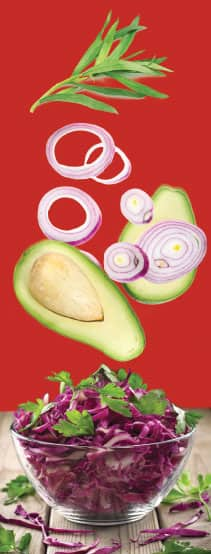Life Extension Magazine®
In September 2012, Australian researchers published findings showing blood glucose at the high end of normal resulted in significant brain shrinkage.1,2 The shrinkage occurred in regions of the brain (hippocampus and amygdala) involved in memory and other critical functions. Atrophy (shrinkage) in these brain areas worsens memory.1,2
For this study, neuroscientists at Australian National University in Canberra studied 249 people in their early 60s. Each of them had blood sugar levels in the normal range. The study subjects’ brains were scanned at the beginning of the study, and again four years later.
Comparing the before and after images, the researchers found significant brain shrinkage among those whose blood sugar levels were high but still below the World Health Organization’s threshold for prediabetes (fasting glucose under 110 mg/dL). The researchers report that these high- normal levels may account for a 6% to 10% decrease in the volume of the hippocampus and amygdala.
The lead researcher stated, “It is this chronic exposure to high glucose levels that is more likely to lead to poorer brain health.” He cautioned that these findings should not be taken “lightly,” as the association between high- normal blood sugar and brain shrinkage was “robust.”1,2
This reinforces the need for people to suppress excess blood glucose, something that I’ve been teaching for years in my calorie control education courses.
Personalized Instruction
Controlling glucose naturally is a primary strategy for protecting and improving brain function, which is taught in The CR Way® to Great Glucose Control program. This is an adult education course that helps participants learn how to lower their blood sugar. Taught online and through teleconferences, the program attracts hundreds of participants every year.
Each person who signs up is a special someone to us—we try to get to know each one. Becoming familiar with participants helps us customize the program for their needs. We want to give all Great Glucose Control users the best opportunity to control their glucose levels naturally.
Many people now sign up for The CR Way® to Great Glucose Control classes to improve their brain function. Of course, diabetes and prediabetes are often the prime motivators.
CR Way Pioneers
Paul McGlothin and Meredith Averill are a bridge, translating the research into the longevity benefits of low-calorie diets and into practical application of the results. Their CR Way® lifestyle is based on decades of research showing favorable changes in genes, gene expression, and other aging biomarkers. They’ve played a pivotal role in this research on aging at Washington University in St. Louis School of Medicine, and the University of California at both San Francisco and Riverside.
Reversing Prediabetes and Type II Diabetes

When people with prediabetes or type II diabetes participate in the Great Glucose Control classes, they are often surprised to discover that their diabetes or prediabetes can be reversed.
Make no mistake: we do not offer medical advice. We simply introduce ways of eating and living that reduce glucose levels naturally. Participants learn to apply the ideas through food choices, recipes, meal plans, and lifestyle changes. Many participants are able to control blood glucose better than they had dreamed possible.
We leave decisions about taking diabetes drugs up to the participants and their doctors.
When The CR Way® to Great Glucose Control participants who have prediabetes or type II diabetes began to turn their conditions around, at first I felt that they had been misdiagnosed. But I’ve been persuaded that the diagnoses were right and that the CR Way lifestyle is a very effective treatment.
Type II diabetes is often an acquired disease, not one that you are born with. It is frequently developed by people who are either overweight, depressed, relatively sedentary, eating high-simple-carbohydrate diets, or a combination of these. When these conditions are reversed by lifestyle changes, diabetes and prediabetes can change too. And The CR Way® to Great Glucose Control is all about beneficial lifestyle change.
Gut Dysbiosis Can Affect Glucose Control
In the most recent series of classes, we found that many participants had serious gut dysbiosis issues. That was not surprising since studies increasingly link glucose control to gut health.3
So we added foods and a special focus on helping participants to normalize their gut function and to include healthful foods in their diets more easily. This new material is slated to be part of this fall’s Great Glucose Control program.
Getting Started
When participants start, they are given fasting and post-meal glucose goals to aim for:
- Fasting glucose: under 80 mg/dL
- Post-meal glucose: under 120 mg/dL
At first, these levels may seem unattainable. They did to me when I started glucose control 20 years ago. But by the end of the course, these glucose levels guide the normal daily practice for many participants.
Foods for Glucose Control, Optimal Health, and Longevity

The classes introduce delicious foods and recipes. These are not just run-of-the-mill health food selections. We have identified some of the most health-enhancing foods that will help with glucose control as well as improve longevity prospects.
A delicious red cabbage soup, for example, gets its floral aroma from a few teaspoons of tarragon and—depending on your preferences—can be made into a hearty meal by serving it over hulled barley, a very low-GI grain.
This recipe is flexible. It can be turned into a delicious red cabbage spread by combining the cooked cabbage and the red onion from the recipe with an avocado and a bit of lemon in a food processor. Whirl the combo for a couple of minutes and voilà—the red cabbage combo is ready to be spread over other favorite foods like sprouted grain bread or either bean or grain pasta, or it can be enjoyed as a side-dish on its own!
As we developed the video for the “Foods and Recipes” part of The CR Way® to Great Glucose Control, we realized that some of the foods had such impressive effects that we set up an opportunity to test one of them through special research at the University of Pittsburgh Medical Center. We await the results.
Lifestyle Plans

The “Foods and Recipes” are integrated into unique lifestyle plans that show participants how to control glucose from the time they get up until they go to sleep.
Instead of just meal plans, the lifestyle plans go beyond diet to include exercise, meditation, sun exposure, and other suggestions not normally included in meal plans or considered for glucose control. This evolved from the recognition that daily activities often make a big difference in glucose levels.
All the classes are taught live so we can respond personally to individual needs. Each lesson is introduced by a narrated slide show video to help Great Glucose Control participants understand and remember the key points. It is followed by a live class. The classes are recorded and class registrants receive the access numbers, so even the busiest people can find time to benefit from the program.
Tarragon Cabbage
 |
Prep time: 12 minutes, Cooking time: 40 minutes
If you are on the lookout for foods with extraordinary health benefits, red cabbage should be one of them. It is the centerpiece of several delicious CR Way recipes, such as this versatile combo. Bear in mind that while 40 minutes of cooking time may seem long, it provides you with time to do other things in the kitchen or elsewhere if your timer works well.
Ingredients: Organic, if possible
- Pure water 3 quarts—Distilled, if possible
- Red Cabbage 1 medium (840 gram)—Boiled, no salt
- Onion 1 medium (240 grams)—Boiled, no salt
- Tarragon 2 Tbsp—Dried
- Avocado 1 medium (200 gram)—if you are making Tarragon Cabbage Spread
Preparation
Remove tough outer cabbage leaves.
Separate the leaves from the heart and other very fibrous pieces.
Cut the cabbage into bite-size pieces.
Peel and chop onion.
Peel and pit avocado—if using recipe to make spread
Cooking
- Add water to a large cooking pot.
- Add tarragon.
- Add cabbage hearts and fibrous pieces.
- Cook at low level of heat for 20 minutes.
- Add onion and the rest of the cabbage.
- Cook for another 20 minutes, allowing it to come to a slow boil.
- Remove from heat.
Serving
Tarragon-Cabbage Soup
Dipper it into bowls and enjoy it!
Red-cabbage Side dish
Drain veggies and serve in side dishes
Or
Serve in side dishes with broth to retain heat longer
Red-cabbage Spread
Add veggies and an avocado to a food processor Whirl it to your preferred consistency.
Serve as a side dish…
As a spread over sprouted grain bread, sprouted bean or grain pasta or as a dip for your favorite raw veggies
Community Meetings

Before the classes start, we hold community meetings where members, especially new ones, call in to join the live teleconferences. These friendly gatherings encourage participants to ask questions that are important to them. We want to hear about their glucose challenges so we can tailor the class material accordingly.
If you have any questions on the scientific content of this article, please call a Life Extension® Wellness Specialist at 1-866-864-3027.
Editor's Note
Science continues to evolve, and new research is published daily. As such, we have a more recent article on this topic: Fasting for a Longer Life
References
- Available at: http://www.webmd.com/brain/news/20120904/normal-blood-sugar-levels-may-harm-brain. Accessed September 15, 2016.
- Cherbuin N, Sachdev P, Anstey KJ. Higher normal fasting plasma glucose is associated with hippocampal atrophy: The PATH Study. Neurology. 2012;79(10):1019-26.
- Utzschneider KM, Kratz M, Damman CJ, et al. Mechanisms Linking the Gut Microbiome and Glucose Metabolism. J Clin Endocrinol Metab. 2016;101(4):1445-54.

